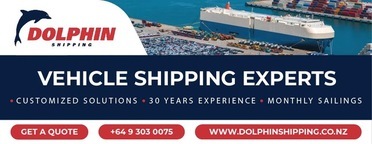Ford's new extreme weather simulator

Ford has announced that it's built a test centre, named the Weather Factory, which puts any extreme weather condition under one roof, enabling engineers to test vehicles' endurance levels.
The testing facility is roughly the size of a football pitch and offers the first automotive wind tunnel to simulate a variety of weather conditions. Ford engineers can now take vehicles on challenging journeys around the world and expose them to the desert heat of the Sahara, the arctic cold of Siberia and the heavy humidity of Costa Rica.
The facility can cool two rooms to negative 40 degrees Fahrenheit, heat them up to 131 degrees Fahrenheit, and generate 95 percent humidity. These extreme temperatures make the facility at Ford’s John Andrews Product Development Centre in Cologne, Germany, the hottest, coldest and most humid place in Europe.
“The vast range of punishing simulation tests will enable Ford drivers to be confident their vehicles can handle whatever climate zone they live in,” said Joe Bakaj, vice president, Product Development, Ford of Europe. “Travelling to the four corners of this building is like taking a trip to the four corners of the world, and our engineers will do that around the clock, every day, to continue to develop future best-in-class vehicles.”
The subject of a €70 million investment, the test centre offers the first automotive wind tunnel to simulate heavy snow and altitudes of 5,200 metres, the same elevation as the Mount Everest North Base Camp. The facility can also cool two rooms to – 40 C and heat them up to 55 C, as well as generate 95 per cent humidity.
The temperature extremes make the facility at Ford’s John Andrews Product Development Centre in Cologne, Germany, the hottest, coldest and most humid place in Europe, and home to the highest point in Western Europe.
Now fully operational, engineers can work on up to ten different vehicles simultaneously. Testing covers comfort, safety and durability, as well as electrical performance, braking, air conditioning, trailer towing, cabin heating and traffic jam situations. Engineers analyse the effects of high speed winds on exterior parts, check the robustness against rain and snow, and see how fast a windscreen defrosts at different temperatures.
“The Environmental Test Centre represents a significant investment for Ford of Europe that will help enable the company here to develop vehicles for global markets,” said Bakaj.
All Ford vehicles will be tested in the facility, which features three climate wind tunnels, including a high-altitude lab, and four temperature-controlled test chambers, one of which will also facilitate humidity testing.
“We can see how windshield wipers function in Arctic temperatures, how engine performance changes in extreme heat and cold, and even how much snow falls on the driver’s head when they open the door. It’s an engineer’s dream,” said Michael Steup, project manager, Environmental Test Centre, Ford of Europe.
Overall, the facility requires 11 megawatts of electricity, enough to power a small town of 2,400 inhabitants, that comes from a fully renewable, environmentally-friendly source. The electricity provided by RheinEnergie originates from certified sustainable sources in Scandinavia and covers the complete electric power demand of Ford's facilities in the city.
Click here to watch the 'weather factory' in action.





